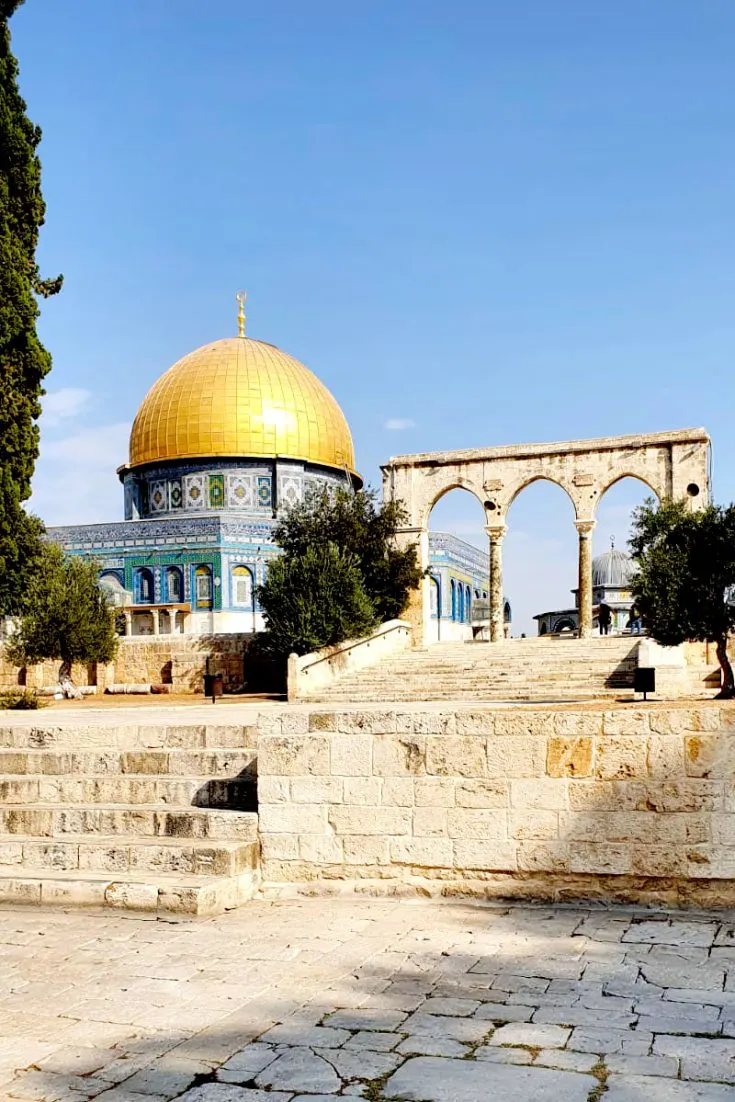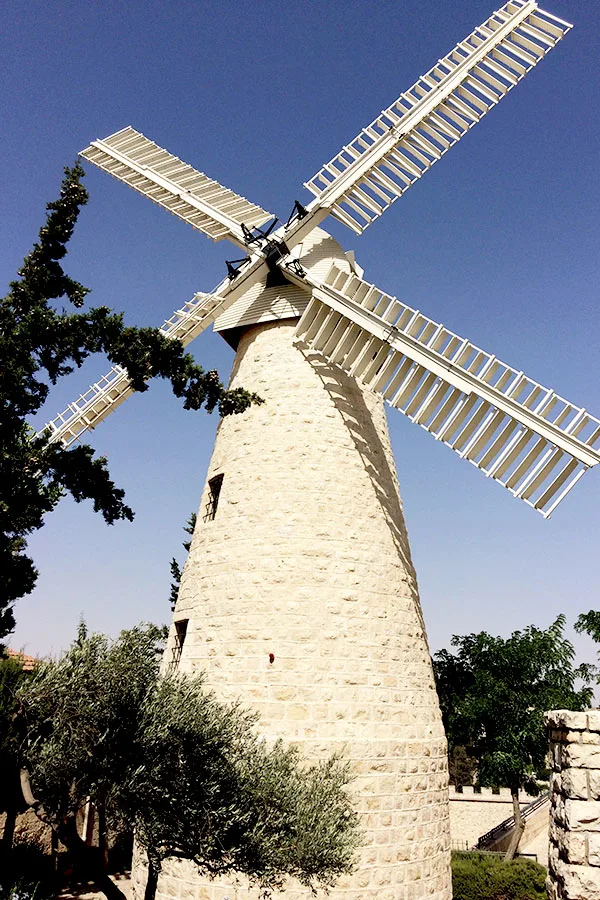Jerusalem is a ancient yet modern and lively city with so much to do it’s hard to see it all!
This is my itinerary for how see the most in just 48 hours in Jerusalem.
Day 1
This covers all the must see sites in the heat of Jerusalem.
Morning
After breakfast start your day off in the Old City where most of Jerusalem's rich history is located.
The Temple Mount refers to the elevated plaza above the Western Wall that was the site of both the First and Second Jewish Temples. It is and always has been the holiest site in the world to Jews.
in the 7th century Muslims began viewing Jerusalem and the Temple Mount as a holy site. Today it is considered the third holiest sites to Muslims, after Mecca and Madina.
At the end of that century the shrine known as the Dome of the Rock was built on the Jewish holy site shortly and Al Aqsa mosque was as well shortly there after.
Non-Muslims are permitted to visit the plaza during set days hours. However they are not allowed to enter the Dome of the Rock.
The Western Wall or the Kotel, is the last remaining wall of the Second Temple. It is revered as a holy site because it is the closest to the Temple Mount Jews are legally allowed to pray.
In addition to Jews, many Christian tourists also come pray at at the wall.
Prayers there include regular Jewish prayers that are said three times a day, saying Psalms, and personal heartfelt prayers.
It is also tradition to leave a note asking G-d for things. These can be anything your heart desires, big or small.
The Jerusalem Archaeological Park and Davidson Center are located nearby the Western Wall in the Old City.
The park contains artifacts from different periods: the First and Second Temple periods, the Byzantine period, Muslim period, the ancient Crusades period, as well as others.
The most exciting findings are: the walls of the city from the First Temple period, the steps leading up to the Temple, the original street from the time of the Second Temple period, shops, ritual baths, and more.
However, you can also walk the streets and climb the stairs pilgrims to the Temple Mount did 2,000 years ago.
The Davidson Center is a museum within the archaeological park, with presentations and exhibitions related to findings from the site.
In addition, a virtual model with local guidance will take you back in time to the days of the Second Temple.
With it, you can and walk with pilgrims on the street, buy a sacrifice, immerse yourself in the mikveh, and ascend to Temple Mount.
The Western Wall Tunnels offer a tours that follow tunnels under ground, between the houses of the Jewish Quarter and the Western Wall Plaza, and extends to the end of the wall under the Muslim Quarter.
The site contains unique archaeological findings from many periods of Jerusalem’s 3,000 years of existence.
This includes evidence of Jewish settlement and government from the First Temple, 2,700 years ago.
This guided tour will bring your through archaeological sites, give historical information and context of discoveries found there.
The Herodian Quarter is a museum that exists under the Jewish Quarter. Here you can see ancient houses, ritual baths, and housewares which belonged to priests who worked in the Temple.
Jewish Quarter Defender’s Memorial features rare images which capture the last days before the fall of the Jewish Quarter in 1948.
It also has short video where residents and fighters recall their experiences from those dramatic moments.
Thirty-nine fighters and thirty residents of the Jewish Quarter fell in the War of Independence.
Forty eight of them were buried in a mass grave where the Gal-Ed memorial monument now marks, Batei Machseh Square.
Afternoon
Leave through Jaffa Gate and walk down Jaffa road. This is a good time to get lunch at a cafe, street food, or at the at Mahane Yehudah Market.
Mahane Yehuda Market more often referred to as “The Shuk” is a favorite of locals and tourists alike.
The main street is lined with stands selling fruits, vegetables, and nuts with clothing and gift shops sprinkled in between.
However, if you go down the opens in the main path you'll find a whole other world with restaurants, cafe's, bakeries, jewelry shops, and so much more!
Enjoy and take your time exploring!
A short walk from the Old City is the Museum of Underground Prisoners which is located in the central prison during the British Mandate.
Alongside criminals, hundreds of underground warriors were imprisoned: Haganah, Etzel, and Lehi.
These were people who had been captured by the British on various actions, while fighting against foreign rule.
Guided museum tours explore the prison cells, an introduction to the story of the underground prisoners and the story of their struggle for the benefit of the Jewish population of the Land of Israel during the British Mandate.
The City of David is the most ancient part of Jerusalem and is only a short walk from the Western Wall.
It was created by King David began over 3,000 years ago.
Today, this ancient city is a national park and the most important archaeological site in Israel. It has some of the most exciting archaeological finds of the ancient world.
The main area that has been arranged for visitors is on the south side of the Old City near the Dung Gate.
Montefiore’s Windmill was one of the first Jerusalem landmarks to be built outside the Old City walls.
It was built in 1857 by Sir Moses Montefiore where he would later build Mishkenot Sha’ananim which became first neighborhood in Jerusalem outside Old City.
Today, the windmill houses the Jerusalem Vineyard Wineries Visitor Center.
Near by in a glassed-in room is a replica Montefiore’s carriage which he used in his travels.
Today, First Station – known in Hebrew as HaTachana HaRishona – was once a busy railway station filled with hustle and bustle.
Today it’s a chic lively place filled with restaurants, shops, and events locals love.
Explore the station and follow the train tracks.
Day 2
This day is spent visiting places with great importance that are outside the center of the city.
Yad Vashem is the Holocaust History Museum and Israel’s memorial to the victims of the Holocaust.
Established in Jerusalem in 1953, Yad Vashem has become the most visited site after the Western Wall.
It is dedicated to preserving the memory of the dead, honoring Jews who fought against their Nazi oppressors, and Gentiles who selflessly aided Jews in need.
The focus of this museum is remembrance, education, documentation, and research related to the Holocaust.
I think, together with the Chamber of the Holocaust, it tells a very important part of Jewish History.
Take a guided tour of Mount Herzl Cemetery.
Mount Herzl is the site of Israel’s national cemetery where Israel’s fallen soldiers are put to rest. Many of the Jewish state’s leaders are also buried here.
The Israel Museum is Israel’s largest cultural institution and is ranked among the world’s leading art and archaeology museums.
The focus of the museum is on the art, Judaica and ancient artifacts of the Land of Israel and beyond.
It features the most extensive holdings of Biblical and Holy Land archaeology in the world.
Or
If museums aren't your thing or you just want to do something different...
The Jerusalem Biblical Zoo is a wonderful way to spend a relaxing day in Jerusalem.
The zoo is home to 2,200 animals representing over 270 different species across 62 acres.
In addition to being a zoo, it also it a conservator of endangered species which they breed in captivity and, in some cases, reintroduce in to the wild.
or
The Jerusalem Botanical Gardens is the largest plant collection in Israel and the Middle East, spanning 45 acres.
The Gardens has plants from around the world, and display more than 6,000 species.
Their collection features 2,700 native species in Israel, including 400 or so are in danger of extinction.
Dinner
Head back to town and explore Machane Yehudah and the city streets at night. There are many wonderful resturants to choose from.

